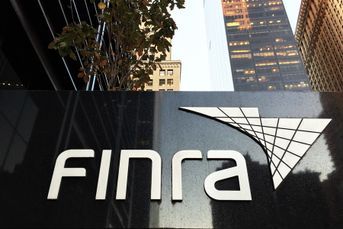No fee model is perfect: RIA Summit 2022

The goal is for independent registered investment advisers to explain to clients simply and transparently what they're paying for services provided.
No fee model can completely absolve financial advisers of any conflicts of interest, according to Knut Rostad, president of the Institute for the Fiduciary Standard.
During a discussion of fees at InvestmentNews’ RIA Summit in Boston Tuesday, Rostad said his organization doesn’t advocate for one business model over another. The goal is for independent registered investment advisers to explain to clients simply and transparently what they are paying for services provided.
[More: TAMPs and fee-based annuities headline first day of RIA Summit 2022]
“The degree to which opacity and obfuscation [have] sort of driven too many parts of this industry in the wrong directions is what we are responding to,” Rostad said.
Courtney Ranstrom, co-founder of Trailhead Planners, said a RIA’s business model depends on three major factors: what services the firm provide, the investor demographic the firm is trying to service, and the regulatory environment the firm operates in. Many state regulators struggle to understand anything other than fees based on a client’s assets under management, but that business model may not make sense for investors working in an industry like technology, where compensation can be tied to company stock. Additionally, some clients may prefer to implement and manage their own portfolio.
Her firm, which primarily serves clients with at least $1 million in investible assets, charges a flat fee for one-time financial planning services and an assets under management fee for clients who want ongoing advice and investment management.
“The key is you have to show your value,” Ranstrom said. “I make it very clear to people that I am not the cheapest option and I’m OK with that. I am not for everyone.”
This is getting more challenging in an era of free trading and low-cost ETFs that is requiring advisers to offer additional services.
“One thing that’s really hard for me is, how do you show your value when you’re preventing someone from making mistakes that they would make when they’re doing it on their own?” Ranstrom said.
Rick Ferri, an investment analyst and adviser, only charges clients a flat hourly fee at his firm, Ferri Investment Solutions. While he believes this allows him to serve a greater portion of the public — from someone who just sold a business for millions in cash to a medical school resident currently in debt — Ferri acknowledged that even the hourly fee model isn’t free from conflicts.
“You can charge 10 hours on something that only took you five hours to do,” he said. “But it’s less [conflicted] than the other models.”
Ferri referred to the AUM business as a “welfare system” where profits made on larger client accounts subsidize smaller accounts that don’t earn as much for advisers. “I never really felt it was fair,” he said.
“The fee has to be aligned with the amount of work you’re doing, and hourly does do this better than every other model,” he said.
However, Ferri advises do-it-yourself investors rather than offering ongoing wealth management. This can have its own challenges, such as when clients don’t implement the steps listed in the financial plan, he said. This would be solved by doing the asset management for clients and charging a separate fee for that service.
Hourly fees will make the firm less attractive to potential buyers, which tend to value ongoing AUM-based advisory fees, according to an earlier panel on M&A trends at the RIA Summit.
It all comes back to which services financial advisers are offering and how they explain what those services cost clients in real dollars rather than percentages, Rostad said.
“We would all be better off if it became the norm that there was a greater understanding of the fees being paid, of the services being delivered,” he said. “And not buried in a 10-page report, but in bullet points: We provided X, Y and Z.”
[More: Fed will get inflation under control next year: Moody’s economist]
Learn more about reprints and licensing for this article.








